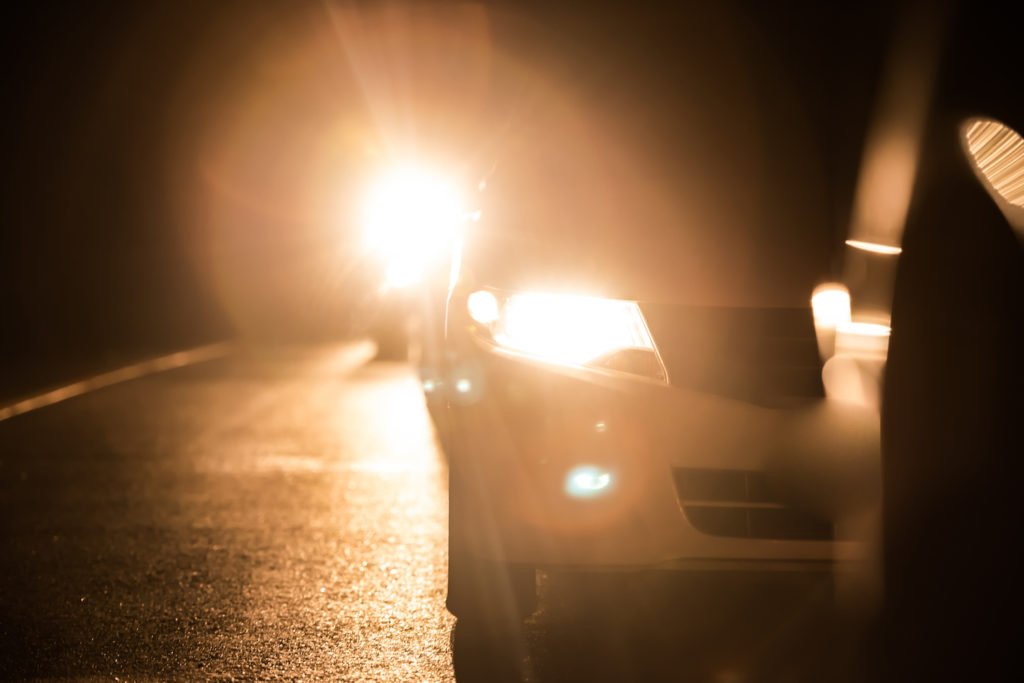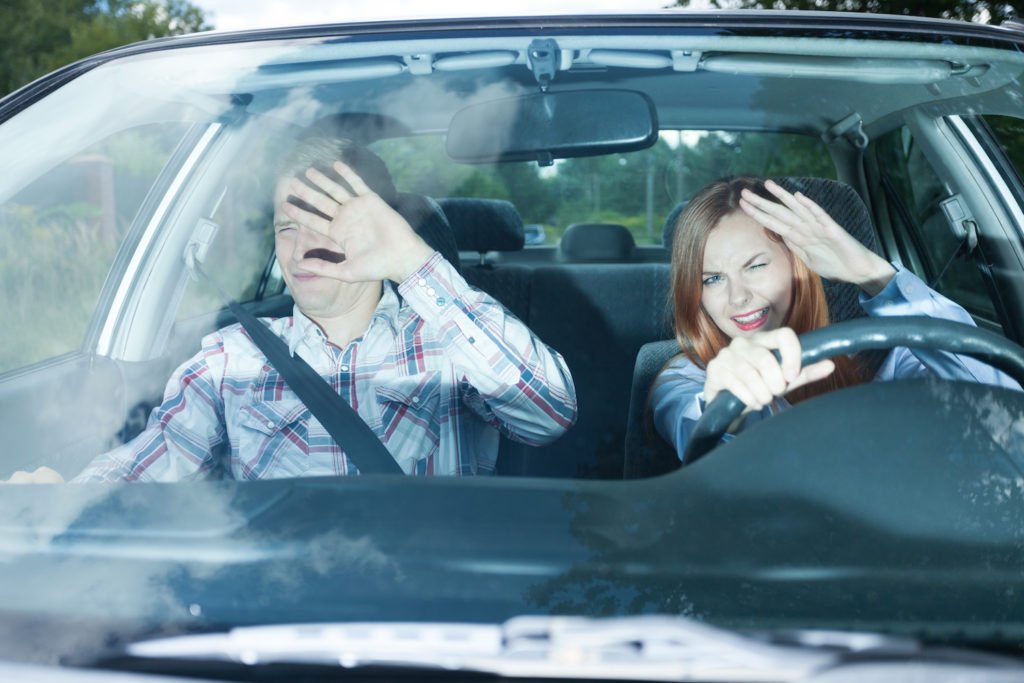CRS 42-4-217 is the Colorado traffic law that requires drivers to dim high beams lights when an oncoming vehicle comes within 500 feet, or when the vehicle ahead of them is within 200 feet. Drivers who unlawfully keep on their “brights” face a citation for a class A traffic infraction. The punishment is a civil fine of up to $100 and two DMV points.
The statute states:
(1) Whenever a motor vehicle is being operated on a roadway or shoulder adjacent thereto during the times specified in section 42-4-204, the driver shall use a distribution of light, or composite beam, directed high enough and of sufficient intensity to reveal persons and vehicles at a safe distance in advance of the vehicle, subject to the following requirements and limitations:
(a) Whenever a driver of a vehicle approaches an oncoming vehicle within five hundred feet, such driver shall use a distribution of light or composite beam so aimed that the glaring rays are not projected into the eyes of the oncoming driver. The lowermost distribution of light or composite beam specified in section 42-4-216 (1)(b) shall be deemed to avoid glare at all times, regardless of road contour and loading.
(b) Whenever the driver of a vehicle follows another vehicle within two hundred feet to the rear, except when engaged in the act of overtaking and passing, such driver shall use a distribution of light permissible under this title other than the uppermost distribution of light specified in section 42-4-216 (1)(a).
(c) A low-speed electric vehicle may use the distribution of light authorized in section 42-4-216 (1.5).
Below our Denver Colorado criminal defense lawyers discuss:
- 1. When must drivers dim their high beams in Colorado?
- 2. What is the penalty for violating CRS 42-4-217?
- 3. Can a criminal defense attorney help?
- 4. What happens if I do not pay the ticket?
- 5. Is not dimming headlights a sign of drunk driving?
- 6. Can I bring a lawsuit if there is an accident?

CRS 42-4-217 requires Colorado drivers to dim their brights if they are within 200 feet of the car in front of them.
1. When must drivers dim their high beams in Colorado?
Under CRS 42-4-217, drivers in Colorado may not use their high beams when either:
- An oncoming vehicle is within 500 feet of them, or
- They are within 200 feet of the car in front of them
Although high beams afford more visibility than low beams, they can be blinding to other motorists. This, in turn, could create a road hazard. So motorists must take care to switch off their brights when an oncoming car (or the car they are following) is close enough to be disoriented by them.
In practice, it makes sense to use high beams only on rural roads. In cities or other populated areas, other drivers will always be too close to use brights.1
2. What is the penalty for violating CRS 42-4-217?
Illegally using high beams is a class A traffic infraction. The fine is $15 to $100, plus a surcharge. And the DMV will add two (2) points to the person’s license. (For adults age 21 or older, accruing 12 points in 12 months will cause the license to be suspended.)2
Infractions are civil, not criminal, so jail is not part of the punishment. However, since they are a moving violation, insurance companies can use them as an excuse to increase premiums.
3. Can a criminal defense attorney help?
Yes. An attorney would fight to get the citation dismissed outright. Two possible defenses are:
- The driver did not violate CRS 42-4-217. The police could have been mistaken about the defendant using high beams. Or perhaps the police wrongly calculated the distance between the defendant and the other cars on the road.
- Using the high beams was reasonable under the circumstances. Perhaps it was a foggy day, or a street lamp was out, and using high beams was the safest thing to do.
Depending on the case, the defense attorney would search for surveillance video, GPS records, eyewitnesses, and weather reports. If the defense attorney can piece together a picture that shows the defendant did nothing wrong – or that the defendant’s actions were justified under the circumstances – then the traffic ticket should be dropped.

Failure to dim high beams for oncoming traffic carries a fine and 2 DMV points.
4. What happens if I do not pay the ticket?
Since infractions are not criminal, defendants who are late on their payments do not have to fear getting a bench warrant. But there are still consequences:
- There will be a default judgment against the defendant, and a collections agency can go after the defendant for the unpaid fine; and
- The DMV will suspend the driver’s license until the fine gets paid (though there is usually a 30-day grace period before this happens.)3
Also see our article on driving with a suspended license / driving under restraint (CRS 42-2-138).
5. Is not dimming headlights a sign of drunk driving?
No. But when a police officer does a traffic stop to issue the CRS 42-4-217 ticket, the officer will be on the lookout for signs of intoxication, such as slurred speech and the smell of alcohol or drugs. If the suspect appears impaired, the officer will administer a preliminary breath test and field sobriety tests. Depending on the results, the officer may then have probable cause to make a DUI / DWAI arrest.
6. Can I bring a lawsuit if there is an accident?
Yes. Motorists who get into a car accident from being blinded by high beams may have a negligence per se claim against the at-fault driver. The plaintiff would need to prove by a preponderance of the evidence that:
- The defendant broke a traffic law (by failing to dim the high beams);
- This traffic law’s purpose is to protect people like the plaintiff (other drivers);
- The plaintiff’s injuries were caused by the defendant’s violation; and
- The injuries resulted in money damages.
The job of a Colorado personal injury lawyer is to pursue compensatory damages from the defendant’s insurance company to cover the plaintiff’s doctor’s expenses, lost earnings, and pain and suffering. In nearly every case, the matter settles through negotiation and no trial.
Law in Other States:
In California? See our article on failing to dim brights in California (Vehicle Code 24409).
In Nevada? See our article on failing to dim brights in Nevada (NRS 484D.215).
Legal references:
- Colorado Revised Statutes 42-4-217 CRS – Use of multiple-beam lights.
- CRS 42-2-127(5)(u).
- CRS 42-4-1709.
